Raising a puppy is challenging, but the experience can be really fun and rewarding at the same time. As a new pet owner, it is very important for you to learn how to groom and care for this little creature so that one day it may grow into a happy, healthy, and well-behaved companion. This article will take you through all steps of puppy care, including understanding puppy development, establishing routines, proper training techniques, providing adequate nutrition, and health care. Just follow these important tips and techniques, and you will be raising a puppy that will fill your life with fun and love for many years to come. This ultimate guide will help you, whether a first-time or a seasoned dog owner, to understand and prepare to cope with everything from high to low in parenting a puppy.
Key Takeaway
- Raising a puppy takes patience, consistency, and training to help them grow up to be a well-behaved dog.
- Prioritizing the health, safety, and wellbeing of a dog from puppyhood is something that every pet owner has to do.
- Normally, a puppy’s developmental process starts with proper feeding patterns and potty training. Did really just now enter a pothead? It’s important to develop a schedule. Birth, potty training, and training.
- The happiest way of spending a life would be having an emotionally strong bond between pup and parent by positive reinforcement and sharing quality time with that little puppy.
Preparing for a New Puppy
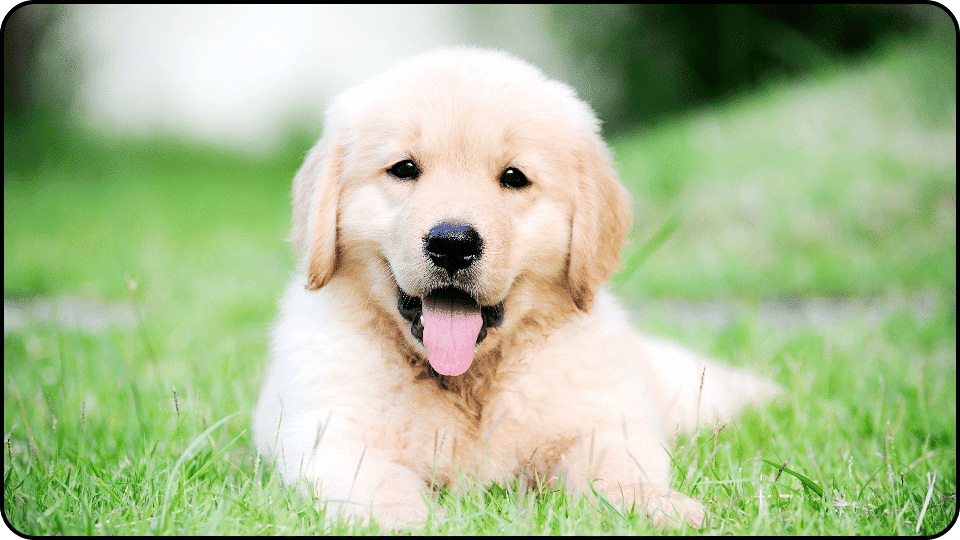
When bringing home a new puppy, doing research on the different dog breeds is important for selecting the correct kind of dog to match your lifestyle. All breeds have different characteristics and needs, some of which can affect how your daily routine runs. Size, energy levels, and grooming needs are among some of the factors that should be taken into account. Some breeds may need more outdoor exercise than others, whereas some are satisfied with a little indoor play and short walks. To have the few choices to choose from, make a list of breeds that suit your living arrangements and personal preference.
Puppy-proofing your house is truly what one has to do for his new four-legged friend to keep it safe. Remove all the small and large hazards from the reach of those wiry teeth and toes, such as electrical cords, which all puppies want to chew. Close those cabinets and other openings from where your puppy can reach harmful substances. Those areas can be barricaded with baby gates like those surrounding the powder room or with opening access to certain rooms. This will keep your puppy safe and also prevent soiling on your living room rug or other areas.
Make your little friend feel like he or she has a space all its own Comfortable space. Create a dog bed or crate so that he or she can find a quiet area to go to for security. They’re being introduced gradually to that crate to develop positive associations of confinement for the purpose of crate training. Provide them access to food and water bowls, and include their favorite chew toy for comfort. Having a designated area helps establish a routine and gives your puppy a sense of stability. Puzzle toys would also be great to have as an added provision for their mental stimulation and boredom prevention.
Also, regular veterinary appointments are mandatory even in terms of maintaining your puppy’s health and development. Pet owners should schedule visits so that your pup will already have a record of vaccinations received, health problems found, and dietary recommendations or notes made by the vet early in life. Stock your decently organized cabinets with essentials that include high-quality puppy food, training pads, teething rings, and many more, preparing you for the great ride ahead.
Bringing Home a New Puppy
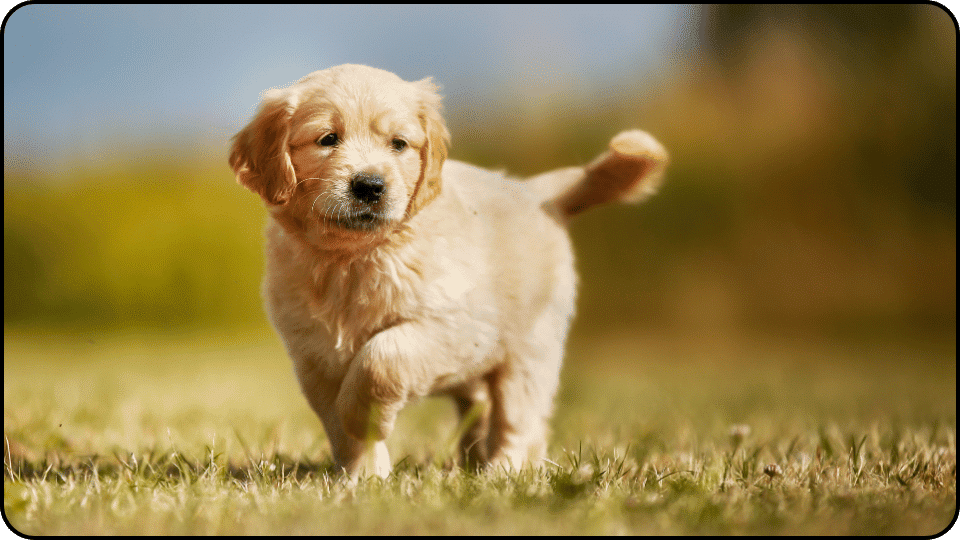
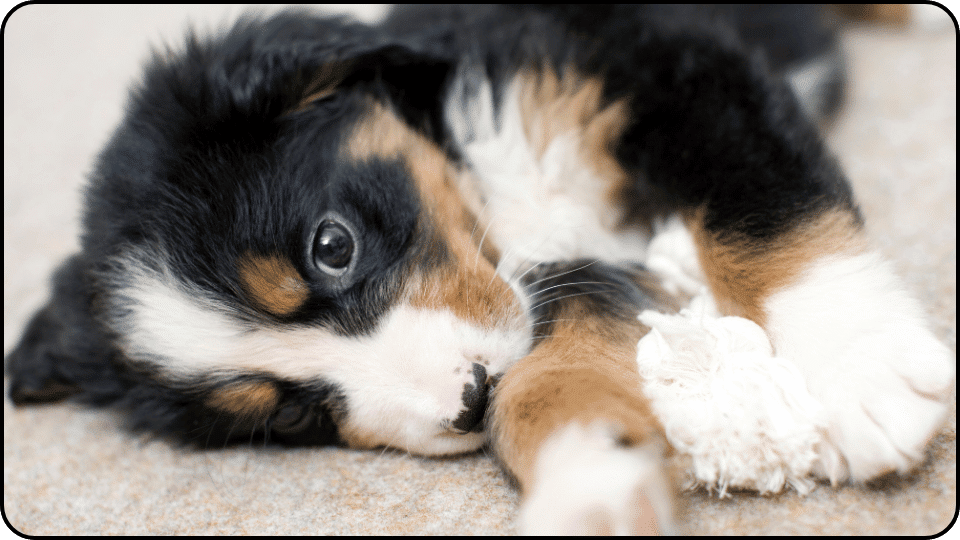
Bringing home a puppy can be so very exciting, and the initial time with a very small puppy can be heartwarming. However, it can sometimes become overwhelming. A responsible pet owner will adequately prepare the home as well as family ties for the new furry family member. Here are a few pointers to ease everyone’s transition:
Before bringing home a new puppy, puppy-proof your home. Take away hazards, secure loose things and barricade areas that you do not want your puppy to access. This should help eliminate accidents and keep your curious pup safe. Use baby gates to barricade certain rooms, and fruit out those electrical cords and other potential hazards.
Have a proper space where your puppy sleeps, eats, and plays. This could result in having a crate, a warm dog bed, and puppy pads. Having that designated space will help your puppy establish a routine with an assurance of safety. Keep that water fresh and have access to their favorite toys to keep them entertained.
Nail down a fixed schedule for potty breaks along with feeding, exercising, and play routines. This is the best method for housebreaking a puppy, as you will be able to take the puppy out most immediately after feeding, sleeping, or playing. Praise and treat the puppy for going potty outside, and you will help them learn this good behavior. Proper socialization is also crucial during this period to ensure your puppy grows into a well-adjusted adult.
Finally, introduce the puppy slowly to the other family members and gradually get used to other pet friends. Also, facilitate contact with supervision, to ensure positive and happy experiences come out of such collations. Gradual introduction helps harmonize the relationship that is going to exist between the new puppy joining the new family and the other family members.
Consider that you are going to enroll for puppy classes that help in toilet and leash training and basic obedience commands. These classes lay the foundation for a well-behaved dog who has had a good adjustment and learning. Puppy owners often face the challenge of balancing the risks of medical exposure and behavioral development, but early socialization in safe environments like puppy classes can help. That new puppy will soon be an important member of the family through discipline, patience, and a whole lot of love!
Puppy Nutrition and Health
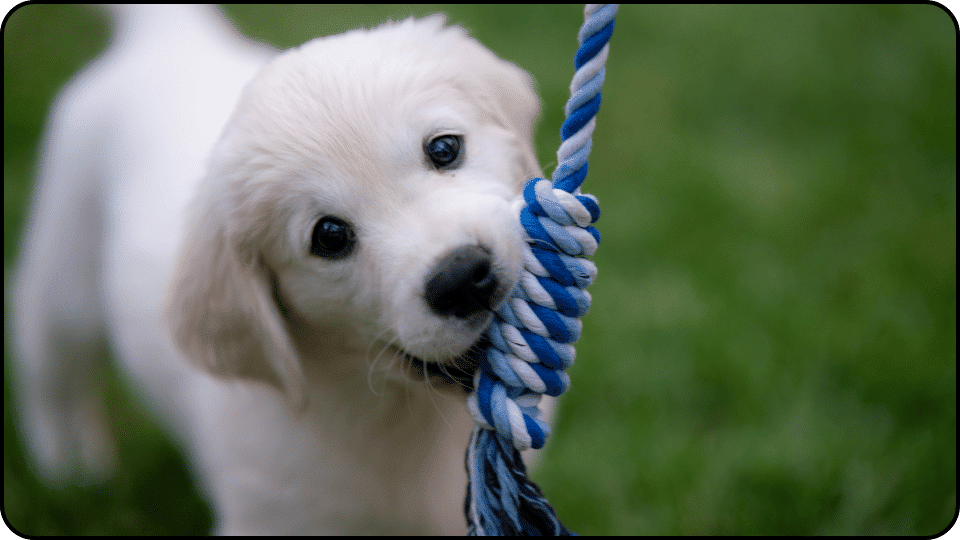
From a very young age puppies need a very high quality puppy food for their growth and development. As puppies are growing up, they will begin to develop their adult teeth and there will be a lot of chewing. Those things have to be taken into account when picking a formula: breed, age, and size. Larger breeds might go onto adult dog food a little earlier than the other breeds because they might have different nutrition requirements. It is important for the owner to pay close attention to the dog’s diet and compliance with the feeding program changes decided by the veterinarian.
Set a feeding schedule. Follow through with your veterinarian until you reach the right feeding pattern-from four feedings to three to two as a puppy grows older. This will help regulate digestion and energy from feeding at the same time every day. Track progress on weight to help prevent health problems like obesity or bloat.
Finally, a trip to the vet-an essential step that appraises your dog’s health. If you notice symptoms of any illness, injury, or behavioral problem with your dog, then immediately take it to the vet. A small problem would escalate catastrophically if there was no early intervention. If your puppy has anything concerning regarding behavior, dog owners should consider taking those queries to a veterinary behaviorist.
Pet insurance is another wise investment. It can assure coverage of unexpected expenses, thereby providing peace of mind. In addition, it is good to shop around for the plan that would suit you best when it comes to budgeting and coverage. That means that you are preparing for the health needs of a puppy growing into a well-adjusted dog.
Puppy-Proofing and Safety
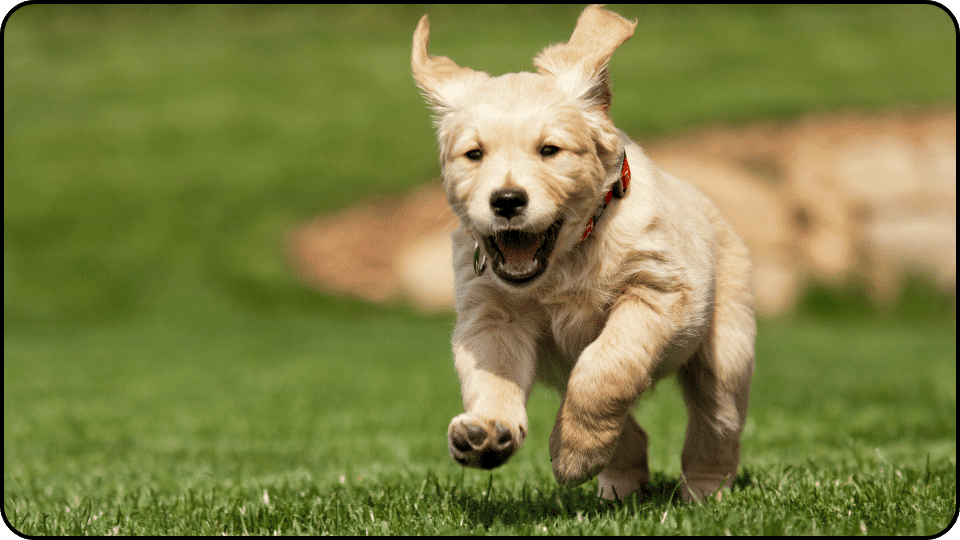
Probably the first point for me is ensuring the safety and wellbeing of the new puppy; that includes keeping him or her away from poisonous substances, medicines, and other dangerous items. Puppy proofing means being prepared to stop accidents and injuries. You can do any of the following-prevent access to areas like the powder room with baby or pet gates block off other openings in your home. That will enable him to create a safe environment for his curious young puppy.
Supervision is really tight if there are small children and other animals at home. Just knowing that puppies are very curious by nature and mostly don’t recognize what’s dangerous should keep anyone on their toes. No programming teaches you; there should be an eye for accidents by which both the puppy and the children can be taught to use and abuse one another. As for family members, it becomes really important to educate them about their soft and sober treatment of the puppy while maintaining his privacy.
A comfortable dog bed or crate for your puppy will also be included in the investment to secure an area that’s theirs. They use a crate for that safe place where they feel secure and at ease. It means house-training: it teaches the puppy his boundaries and routine as well. It has to be big enough to allow your puppy to stand, turn around, and lie down comfortably inside.
An arm’s length carries safety measures for securing electrical cords and possibly even removing or blocking access to many other hazardous items. Well, puppies love to chew; electrical cords are particularly attractive. Cord covers, or simply hiding all wiring behind furniture, should do the trick. With this precaution taken, you’ll have a safe and growing environment that will later turn the little puppy into a well-adjusted dog.
Dog Training and Socialization
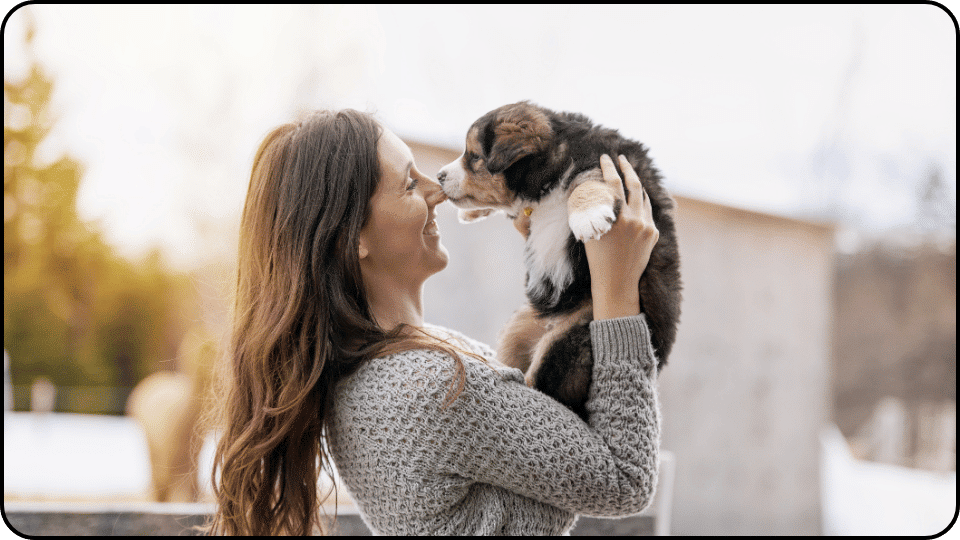
Formally conditioning your puppy early on will give him a good head start in achieving trust and rapid learning through positive reinforcement techniques. Thus, have him trained in puppy classes or get professional help from a dog trainer to provide good advice. The course of training will encourage structured training and address specific identified challenges.
An area of focus should be teaching basic commands such as sit, stay, come, and leash training. These commands are the simple rudiments of dog basic obedience, which allow for hassle-free daily living. Make those sessions fun and brief so as not to lose the puppy’s training interest and willingness. A few minutes on any day can really influence the puppy.
Training and socializing young puppies with other dogs, animals, people, and different environments is crucial. This is the best practice for a dog to build the confidence to prevent behavioral problems according to its learning. Expose the puppy to several experiences, and make a note of making sure each of them has the positive experience.
Reward consistent good behavior and advise against the bad, but do not punish. Instead of being the origin of a trouble-free relationship and possibly action problems, it is likely to spoil it. Reinforcement can be positive in the form of treats, praise, and even affection. Patience and consistency are what is needed in raising a happy, well-mannered friend.
Basic Obedience
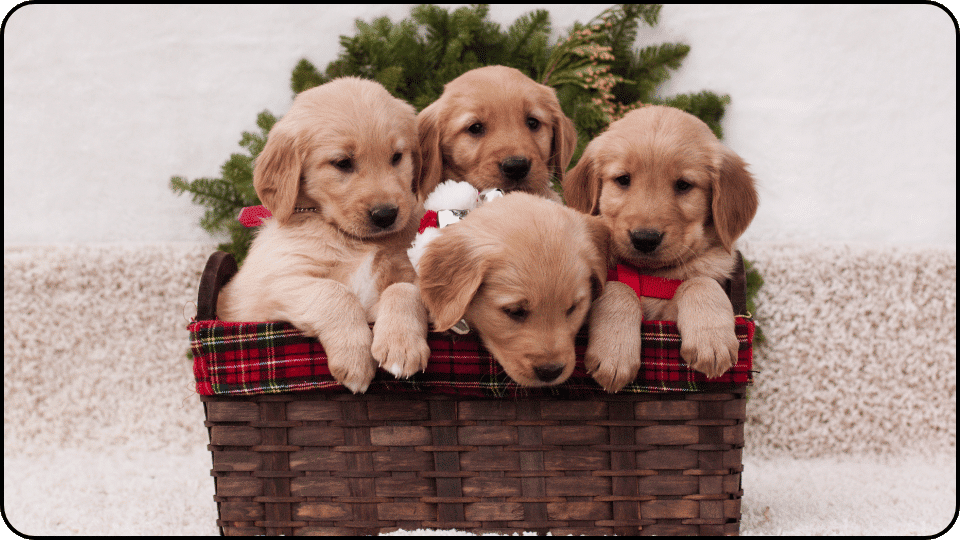
Obedience training is purely a foundation of dog training. Very important is to begin teaching obedience when the dog is just a puppy. It makes day-to-day life more streamlined and enjoyable. Here are very basic commands for obedience.
- Sit: Place a treat above the dog’s head and drag it backward towards the tail. While doing this, the dog should follow it with his nose, and as a consequence, the lower side will naturally bend. After the dog’s sitting, reward it by offering the treat and plenty of praise.
- Stay: The puppy should be made to sit or lie down. You will then take a few steps backward and command: “stay.” From here, gradually increase the distance and time while the puppy remains to stay. Always return to the puppy and reward him to build that bond.
- Come: When you want the puppy to come back, call out his name and then say: “come.” Use cheerful tones and reward him with treats and praises when he responds. This is a safety command that should always be practiced.
- Down: Take a treat and place it close to your puppy’s chest, slowly lowering it on a downward direction while holding the treat in view. The puppy should lower itself while doing so, and it will lie down thereafter. Once it is down, reward it with the treat and praise.
- Leave it: Put it in front of your puppy along with saying “leave it”. When the puppy goes to grab it, put your hand over it and say “no”. If the puppy ignores the treat, give it praise, then give it a different one. This command strictly provides unwanted behaviors and thus provides safety for your puppy.
When training your puppy, make sure to remember to apply positive reinforcement techniques. Whether it is through treats or praise and even affection, he will keep that bond strong and encourage the puppy to learn. He must be patient and consistent, and given time and practice, your pup will grow up to be a well-adjusted, obedient adult dog.nt and consistent, and with time and practice, your puppy will become a well-adjusted and obedient adult dog.
Housebreaking and Crate Training
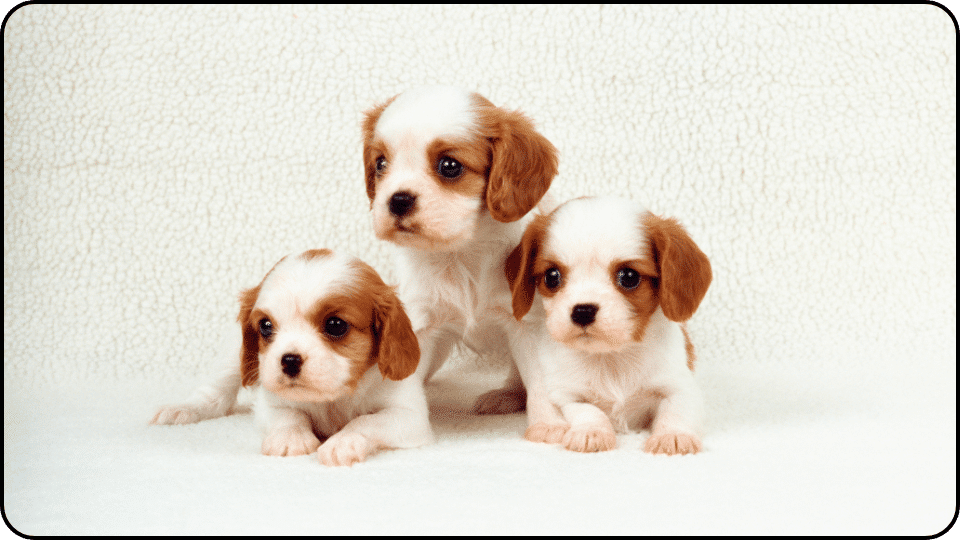
Set up a regular schedule for potty breaks. Take your pet outdoors often after meals, naps, or playtime. Respond with immediate rewards when the animal goes outside. This positive reinforcement builds up good habits.
Instead, make use of puppy training pads within a particular indoor location. This is the only way-in the event of inclement weather or if a speedy trip outside is not possible. So that the pet will not learn to soil in other regions and will be taught where it is appropriate to wet indoors.
The crates must be introduced as early as the puppy age itself. The comfortable, safe area provides the housebreaking method within it as well as a crate for your pet. Choicest crates should be those that have enough place to stand, turn, and lie down. Increase the crate time gradually as your pup settles in. On no account must the crate be used as a punishment.
Accidents should be cleaned up as quickly and as thoroughly as possible. Cleaning should be thorough with pet safe cleaners to remove odors so that continuous soiling occurs at the same spot. Consistency and patience are all that matters. Thereafter, the puppy will learn the ropes and become an adjusted dog.
Managing Puppy Behavior
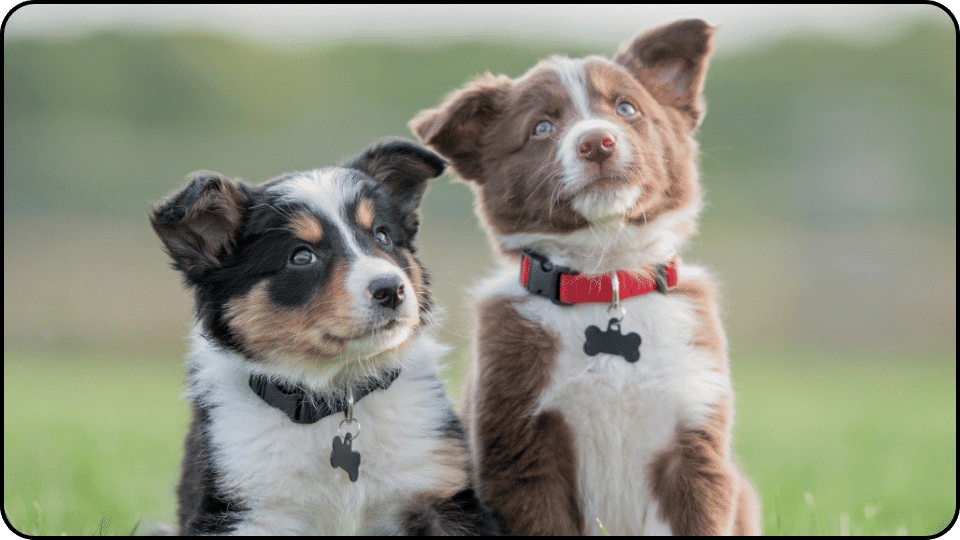
Be alright and be persistent at your training. Puppies can have the human-like read on being toddlers where all they need is a little more time and repetition to get things done. Command simple ones, adding complexity as time goes by. Know that success lies on being consistent.
Exercise your puppy plenty but engage their minds too. Keep them busy with play, puzzle toys, and training sessions; after all, a well-exercised pup is less likely to indulge in destructive activities. Consider daily walks or playtime in the yard to exhaust all the energy.
Redirect chewing to appropriate outlets. Teething rings and durable chew toys meet their need to chew. Praise your pup for preferring their toys to furniture or shoes. This builds good habits and keeps your belongings safe.
Teach your pup to enjoy being handled and groomed. Start with short interactions, providing plenty of treats to create a positive experience. Gradually increase the duration of grooming as they become more accustomed to it. Address methods of resource acquisition and other behavioral issues quickly. Use a professional dog trainer for guidance if needed.
Grooming and Hygiene
Puppy grooming is an obligation to keep it looking good and healthy. Regular brushing keeps its coat shiny and reduces shedding. Choose appropriate brushing tools according to the coat type of your puppy-whether it’s short, long or curly. Managing their fur thus reduces the amount of hair shed around your house.
Early introduction to tooth brushing will lay the foundation for good dental hygiene practices. Gently clean your puppy’s teeth with puppy toothbrushes and toothpaste. This helps prevent dentals, and their breath smells as fresh as a new day. Make it fun and full of praise and treats so that your puppy learns to associate positive things with dental chores.
Regularly check and clean their ears to prevent infections. Use a vet-recommended cleaner for ear cleaning and small cotton balls to clean the outer ear, but do not go deep inside into the ear canal. Trim their puppy nails to ensure they are short and comfortable. However, if you are not sure how to do it correctly, consult a veterinary doctor or a professional groomer.
Bathe your puppy only when it is strictly required; a little sprinkle of that puppy-safe shampoo while lathering will keep your puppy’s skin and fur healthy. Maintaining cleanliness on bedding, living areas, and toys prevents dirt and germ accumulation. Wash containers used for food and drinking water daily to maintain their hygiene. Use grooming time to bond with your puppy. It should be enjoyable through praise and treats. Start with shorter sessions and gradually increase the time while your puppy learns to become more comfortable. Therefore, this will keep your puppy clean as well as improve your relationship with him.
Building a Strong Bond
Building an effective relationship with your puppy is one of the most important things that can lead you toward a happy and successful bonding experience. Spend enough time together every day. Play with and train the puppy, enjoy being close to each other-the minutes you spend together serve as an introduction to building trust and affection.
Consistent interaction and training are keys. Always make use of positive reinforcement to encourage good behavior. Treats and praises are great ways to reward your puppy, therefore strengthening the bond with the puppy and helping him/her understand what you’ve expected. Such a technique builds a sense of safety and trust.
Be very loving, give attention and affection. This will make your puppy feel safe and loved. Take them walking, hiking, and have puppy playdates with other dogs: These activities will make you both bond better and enable them to socialize with others.
Bonding is the whole life. Therefore, in time, your bonding with the dog will only grow and get deeper. Be patient and soak it in. All the experiences that are shared will include something that makes the bond very special with your furry friend.
Final Thought
Raising a puppy takes so much effort, time, and patience; rewarding experience within which one must learn. Safety, love, proper training and socialization, and lots of quality time together will cause your puppy to grow into an idyllic, happy, healthy, well-adjusted dog. But remember: there is no one-size-fits-all for puppies. Every little puppy has its individual needs and personality traits. With like so much else, behavior modification, plus time, strong love, and bonding, you will reach the happy year extension with your furry friend.
FAQs & Quick Answers
A professional dog trainer shares the ABCs of training.
Puppy training entails consistent, patient, and positive reinforcement from a dog trainer. Start with basic commands such as sit, stay, and come, as these will increase the chances of your puppy being familiar with advanced training methods. For a well-balanced dog, regular exercise, socialization with other dogs, and keeping the training sessions practical and exciting are key components.
I took my puppy out to pee, but they didn’t pee. What should I do?
On the other hand, if your puppy refuses to pee outside, bring him in and watch him very closely. Try again in a little while and make sure that you praise and reward them when they pee outside. It requires consistency and patience to house train a puppy.
My vet said not to let my puppy meet other dogs until they’re fully vaccinated.
Limit your puppy from contracting diseases by following the vet’s prescription. Then, socialize your puppy by introducing it to other healthy puppies as long as they have been vaccinated. Puppy classes that require vaccinations can be attended too.
